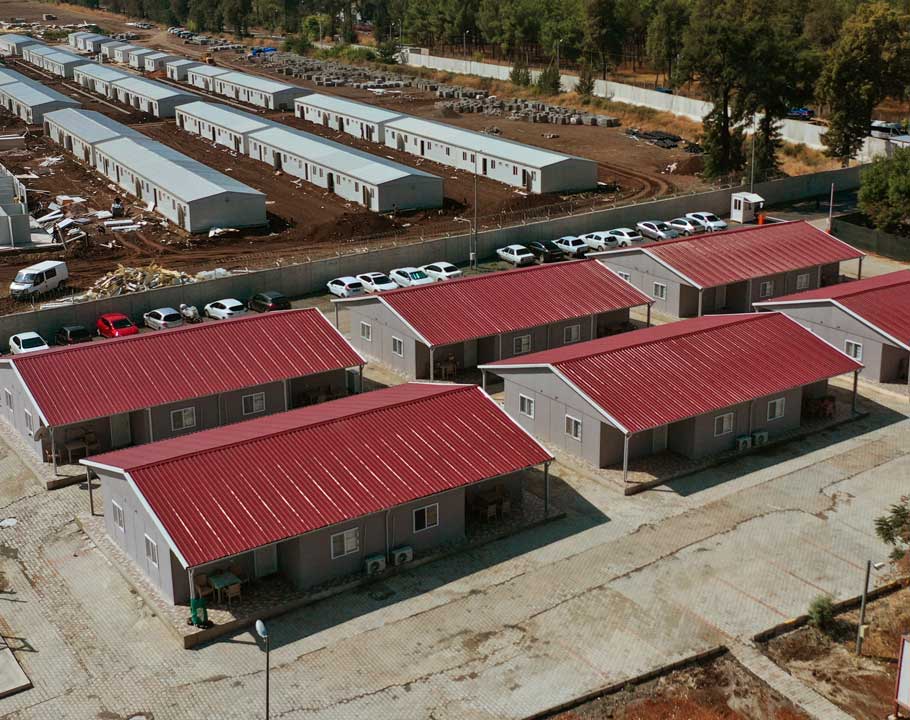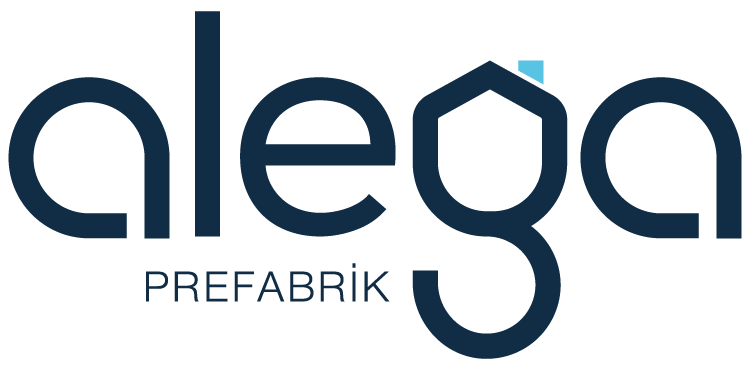Prefabricated Public and Social Facility Buildings
Prefabricated Groups
Prefabricated public and social facility buildings offer a functional, economical, and environmentally friendly alternative in today’s rapidly advancing construction industry. With these features, they hold an important place among the structures preferred by both public institutions and the private sector. Prefabricated buildings bring your projects to life in the most efficient way with advantages such as fast installation, low cost, and long-lasting use.
Table of Contents
ToggleThe Role of Prefabricated Buildings in Public and Social Facilities: Fast and Efficient Solutions
Public and social facilities are important structures that make daily life easier for society and bring people together. Prefabricated public and social facility buildings play a crucial role in meeting this need. Prefabricated building models used in various areas such as health, education, cultural activities, and sports offer fast production and installation advantages, meeting project requirements in a timely and efficient manner. These buildings provide both economic solutions and stand out with their functionality, allowing projects to be completed quickly.

Prefabricated Public and Social Facility Buildings
Prefabricated buildings can be designed for a wide range of uses, from educational facilities to municipal service buildings, social spaces to sports halls. These structures can be customized according to the specific needs of each industry, thus providing significant savings in both time and cost. They offer effective solutions in various projects with their quick installation and durability, providing both functionality and economic benefit.
Fast and Efficient Solutions
The continuous and effective delivery of public services depends on the rapid provision of appropriate physical infrastructure. However, the long construction processes of standard buildings can lead to significant time losses. Prefabricated public buildings stand out with their fast assembly advantages. While reinforced concrete structures take a long time to complete, prefabricated buildings can be made ready for use within a few weeks.
Prefabricated public buildings offer significant advantages in urgent projects or to meet the service needs of a specific area. Municipal buildings, healthcare facilities, and temporary educational buildings can be quickly constructed and put into service through prefabricated technology with Alega.
Prefabricated Social Facility Buildings: The Gathering Spaces of Society
Prefabricated social facility buildings are of great importance as spaces where communities socialize and participate in various activities. Thanks to this technology, structures that meet both functional and aesthetic demands can be designed. Social facilities such as sports halls, cultural centers, wedding halls, and activity areas can be built quickly, economically, and efficiently with prefabricated buildings.
Another key advantage of these structures is their wide design possibilities. Interior and exterior designs are made according to the project’s specific requirements and the intended use of the space. This ensures that both aesthetics and functionality are provided, offering solutions that best meet the users’ needs.
Advantages of Prefabricated Public and Social Facility Buildings
The increased use of prefabricated buildings plays a significant role due to the versatile advantages they offer. Prefabricated public and social facility buildings not only follow environmentally friendly production processes but also provide the following unique benefits:
- Fast Production and Installation: Prefabricated structures are produced in factories and quickly assembled on-site. This process is completed much faster compared to traditional construction methods.
- Economic Solutions: Prefabricated structures are a highly economical alternative in terms of both production costs and labor expenses. They offer an ideal solution for projects with limited budgets.
- High-Quality and Durability: Modern prefabricated buildings are made from high-quality materials that can withstand harsh weather conditions, ensuring long-term durability.
- Flexibility and Customization: Prefabricated buildings can be easily customized according to the project’s needs. They are adaptable for both temporary and permanent use.
- Environmentally Friendly: The use of recyclable and sustainable materials minimizes environmental impact, and the low waste management approach strengthens the ecological benefits of these buildings.
These advantages make prefabricated buildings an excellent option for projects that need to be completed quickly, economically, and with environmental sensitivity.
Application Areas of Prefabricated Public and Social Facility Buildings
Prefabricated buildings have a wide range of applications in public and social facilities. Each structure is customized to meet the needs of users, offering tailor-made solutions for specific projects. Here are the areas of use for prefabricated buildings:
- Municipal Service Buildings: Prefabricated structures are an ideal alternative for municipal services with their fast installation and flexible designs.
- Healthcare Centers: In areas requiring urgent health services or quick medical responses, prefabricated healthcare centers can be quickly established to meet the public’s needs.
- Sports Centers: Social activity spaces such as gyms, fitness areas, and swimming pools can be quickly and economically built with prefabricated structures.
- Educational Institutions: Prefabricated classrooms and school buildings can be preferred to address temporary educational needs or the rapid increase in student numbers.
- Wedding Halls and Event Spaces: Prefabricated wedding halls, cultural event spaces, and other social venues can be realized with wide design options.
Each building can be designed according to the users’ specific requirements and customized to meet different project needs. As a result, prefabricated buildings offer quick, economical, and functional solutions.
Economic Benefits of Prefabricated Public and Social Facility Buildings
Prefabricated buildings offer significant cost advantages, especially in public and social facility projects. While prices vary depending on the specific requirements of the project, prefabricated structures are generally more affordable than traditional building methods. Here are the key factors affecting the economic benefits of these structures:
- Size and Design: The size and design of the prefabricated building are important elements that influence pricing. More economical options can be created depending on the scope of the project.
- Material Selection: The durability and aesthetic features of the building depend on the materials used. However, prefabricated buildings are generally constructed at a lower cost, even with high-quality materials.
- Project-Specific Requirements: The building’s functionality, interior fittings, and additional features are factors that influence pricing. However, prefabricated buildings can be easily customized with flexible designs to suit all needs.
Long-Term Economic Gains:
- Low Maintenance Costs: Prefabricated buildings require low maintenance, which provides long-term savings. This offers a budget-friendly advantage for public and social facility projects.
- Energy Efficiency: Insulation systems reduce energy costs and provide long-term energy savings. This reduces operational costs.
Conclusion: Prefabricated public and social facility buildings not only provide economic benefits during the initial investment phase but also offer long-term savings. With their solid, fast, and functional designs, they have become a preferred solution for many projects, from public services to social spaces. Prefabricated buildings, which provide great advantages in both cost and time, are a practical and suitable choice to enhance the value of your projects.


